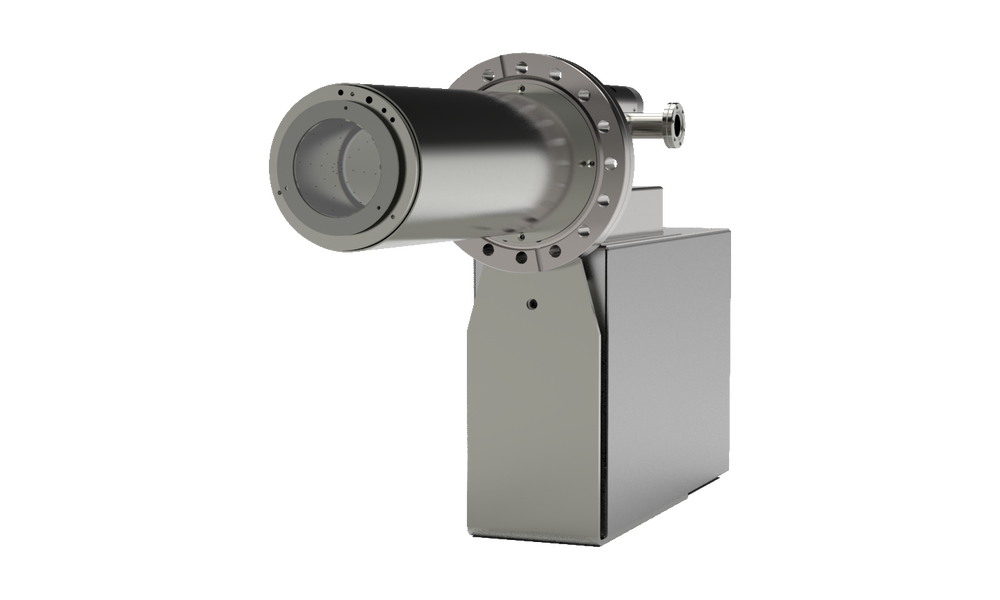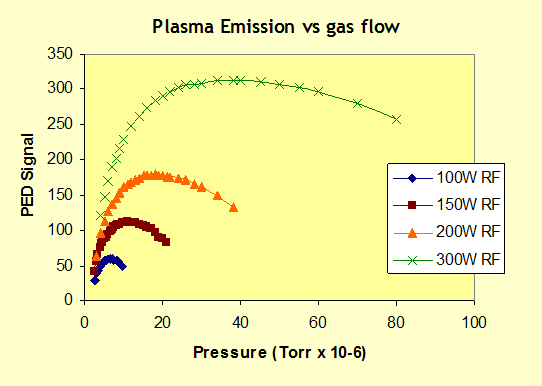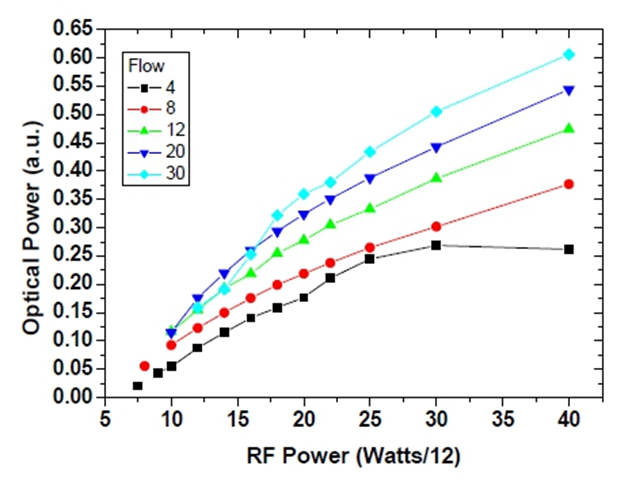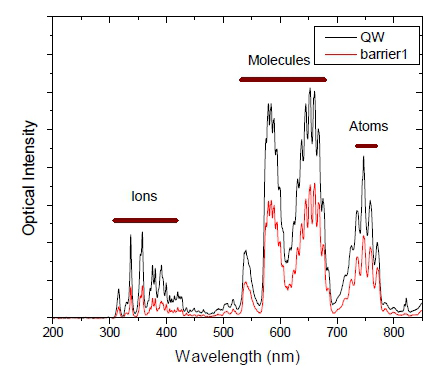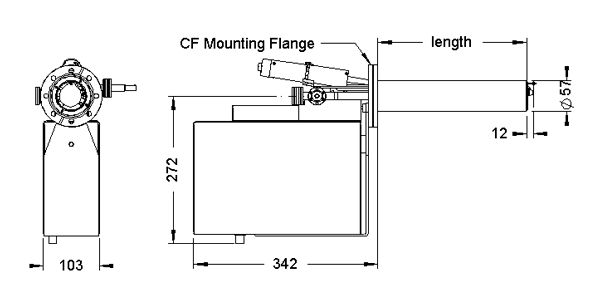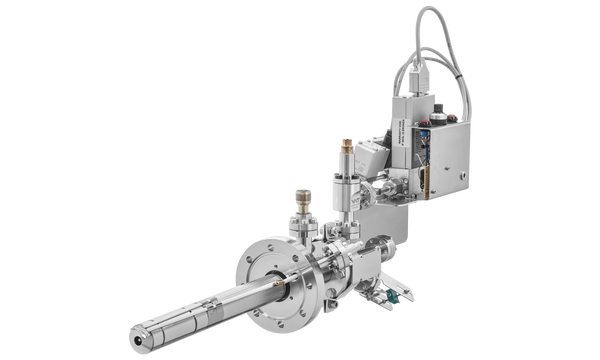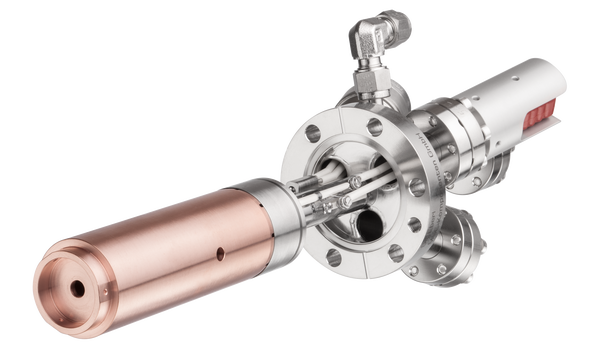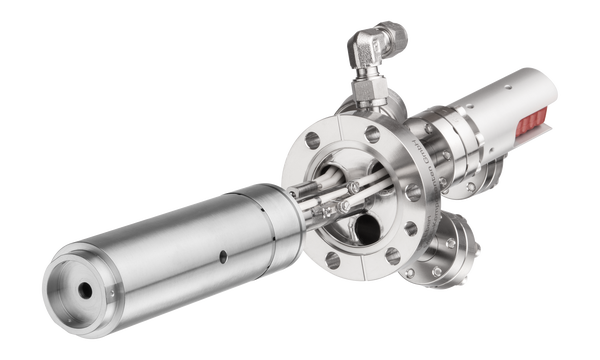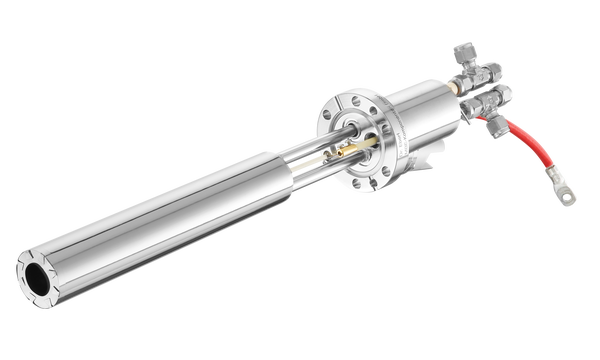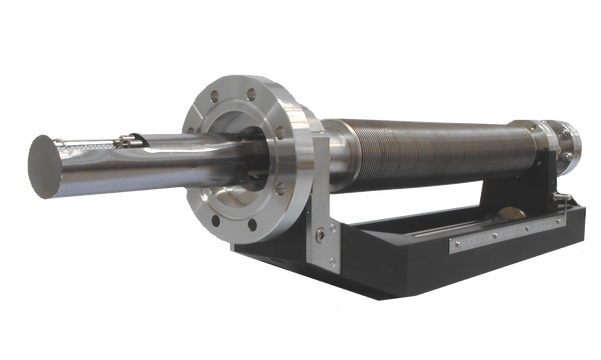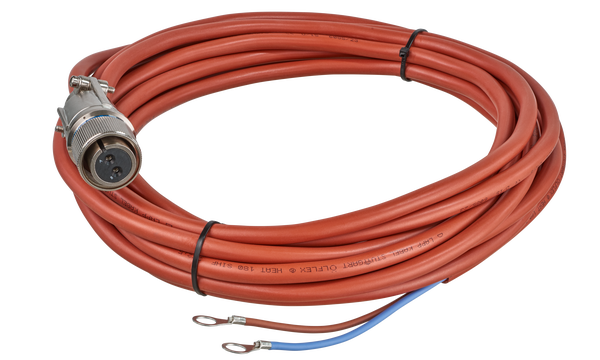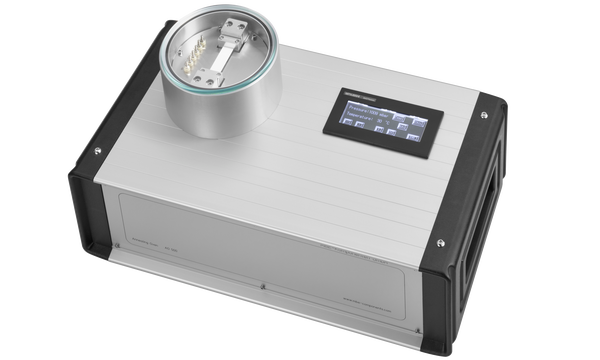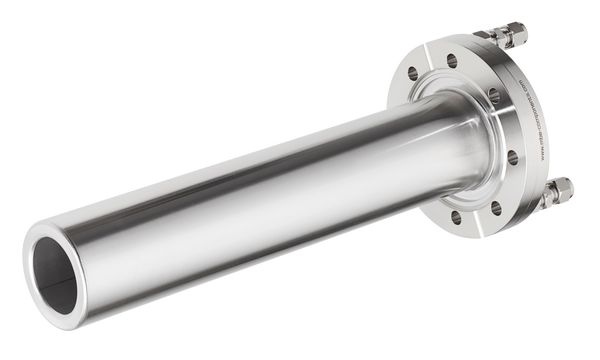- Nitride and Oxide MBE growth
- UHV compatible construction for RF cavity operation
- Customized aperture hole plate
- Efficient water cooled coil, low thermal load on other experimental equipment
- RF operation @ 13.56 MHz with Automatic RF tuning during operation
- Optional shutter
- Optional plasma emission monitoring
Introduction
Neutral, atomic species have been shown to be highly beneficial in the growth of high-quality compound materials. Molecular gases such as oxygen or nitrogen are many orders of magnitude less reactive than their dissociated atomic form. The RFP plasma source produces such dissociated species, which have increased reactivity by many orders of magnitude. Atomic species themselves carry negligible kinetic energy and therefore allow rapid film growth without generating defects.
RF plasma sources have been used with great success in many semiconductor film-growth applications such as GaN, GaInNAs, ultra-thin Al2O3 and high-K dielectrics. They are also utilized in a range of other applications such as data storage, catalytic films, and surface cleaning with atomic hydrogen.
MATS-Series RF plasma sources are designed for use in the most demanding applications. The coaxial RF coil is optimized for power transfer to the plasma zone, with full coupling along the entire length of the coil, ensuring even dissociation and maximum atomic flux. The support components are constructed in such a manner as to minimize RF coupling with the coil, reducing power losses.
The discharge zone is manufactured from high-quality materials ensuring minimal contamination of the beam.
The gas flow can to some extent be tailored to suit a particular application by varying the number of holes in the discharge zone aperture plate.
Gas flow determines the pressure within the discharge zone for a given aperture plate. This pressure determines plasma conditions which have a heavy influence on the beam constituency. There is a pressure, at which the dissociation reaches a maximum, and it is generally advisable to run the source at or slightly above this pressure (this optimum can be found by using the plasma emission detector).
The source is supplied with an automatic matching network unit, which makes tuning of the source straightforward and relieves the user of the task of making minor adjustments as plasma conditions change.
The relationship between the applied RF power and optical emission collected from the plasma is close to a linear one, as shown in the figure.
(The data was provided by Prof. M. Hopkinson, National Centre for III-V Technologies, The University of Sheffield.)
It is possible to generate a plasma which will favor the production of either molecular or atomic species.
(The data was provided by Prof. M. Hopkinson, National Centre for III-V Technologies, The University of Sheffield.)
References
- Solid- state co oxidation by atomic O: a route to solid CO2 synthesis in dense molecular clouds, U. Raut and R. A. Baragiola, The Astrophysical Journal Letters, 737:L14 (5pp), 2011 August 10.
- Combinatorial Approach to the Study of Particle Size Effects in Electrocatalysis: Synthesis of Supported Gold Nanoparticles, Guerin, Samuel; Hayden, Brian E.; Pletcher, Derek; Rendall, Michael E.; Suchsland, Jens-Peter; Williams, Laura J.; University of Southampton, Journal of Combinatorial Chemistry, July 22, 2006
- High-Throughput Synthesis and Screening of Hydrogen-Storage Alloys, Guerin, Samuel; Hayden, Brian E.; Smith, Duncan C.A.; University of Southampton, Journal of Combinatorial Chemistry, December 12, 2007
| Mounting flange | DN63CF (4.5“ OD) or DN100CF (6“ OD) |
| In vacuum length | 250 mm - 400 mm |
| In vacuum diameter | 57 mm / 96 mm |
| Gas compatibility | N2, O2 , Ar, H2 |
| Bakeout temperature | 200°C (all airside connectors removed) |
| Cooling | Water (0.5 l/min) |
| RF power | 30-600 W |
| Gas flow | 0.1-10 sccm (gas and aperture dependent) |
Options
The following options are available with the source:
- Shutter (S) – The source can be equipped with either manual or automatically actuated (electrically driven) shutter. The shutter is constructed from refractory metals to ensure UHV compatibility.
- Beam Thermalizer (T)
- Plasma Emission Monitoring (M) - The source can be equipped with a plasma monitor and atomic line filter to allow optimisation of the plasma conditions for atomic or molecular flux generation.
- Mass flow controller (F)
Dimensions
Specific data
For general information on CF mounting flanges see Flange and Gasketdimensions .
| Product | CF flange | Gas type | Material discharge tube* | Cooling | Shutter** | Beam thermalizer | UHV dimensions*** [mm] | RF power supply | Emission monitoring | Mass flow controller | |
|---|---|---|---|---|---|---|---|---|---|---|---|
| [mm] / [mm] | [W] | ||||||||||
| RFP | 63- | N,O,Ar,H | P,A | K | S**- | T | LxxxD57 | 600 | M | F | |
| RFP | 100- | N,O,Ar,H | P,A,Q | K | S**- | T | LxxxD96 | 600 | M | F |
* P: PBN, A: Al2O3 , Q: Quartz ** rotary shutter possible on same flange *** specify UHV length L with order
Product code: e.g. RFP 63-N-P-KS-T / 600-M-F is a plasma source on DN63 CF flange for N-gas with P discharge tube, cooling plus shutter option and beam thermalizer. As accessories there are included a 600 W power supply, emission monitoring and a mass flow controller.
